(this is best viewed with Internet Explorer)
Living In A QE World
by James Bianco
All Central Bank Balance Sheets Are Exploding Higher, Or Engaged In QE
The degree to which central banks around the world are printing money is unprecedented.
The first eight charts below show the balance sheets of the largest central banks in the world. They are the European Central Bank (ECB), the Federal Reserve (Fed), the Bank of Japan (BoJ), the Bank of England (BoE), the Bundesbank (Germany), the Banque de France, the People’s Bank of China (PBoC) and the Swiss National Bank (SNB). Noted on the charts are significant events or growth rates.
Shown is the size of each respective balance sheet in its local currency. Note that all are exploding higher as every chart goes from the lower left to the upper right. Most are still making new all-time highs. If the basic definition of quantitative easing (QE) is a significant increase in a central bank’s balance sheet via increasing banking reserves, then all eight of these central banks are engaged in QE.
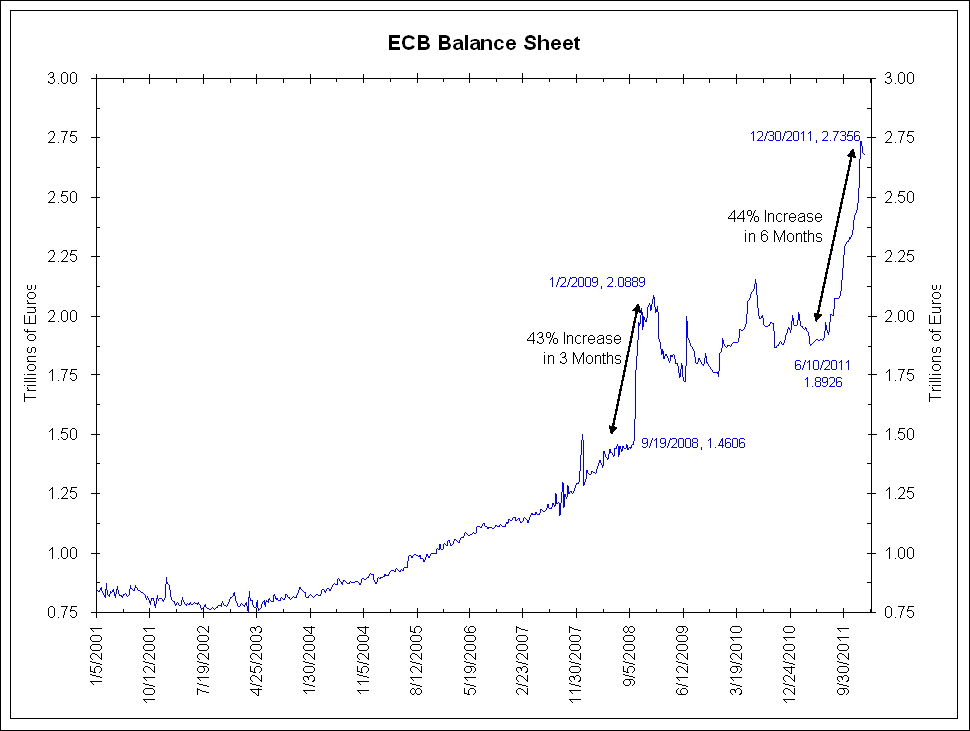
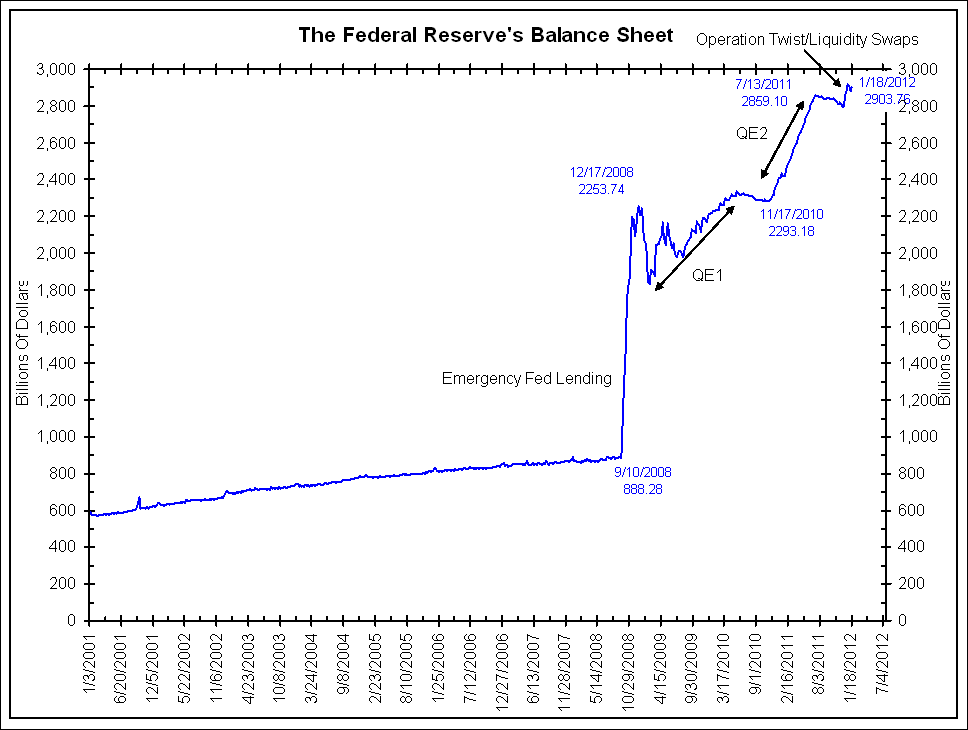
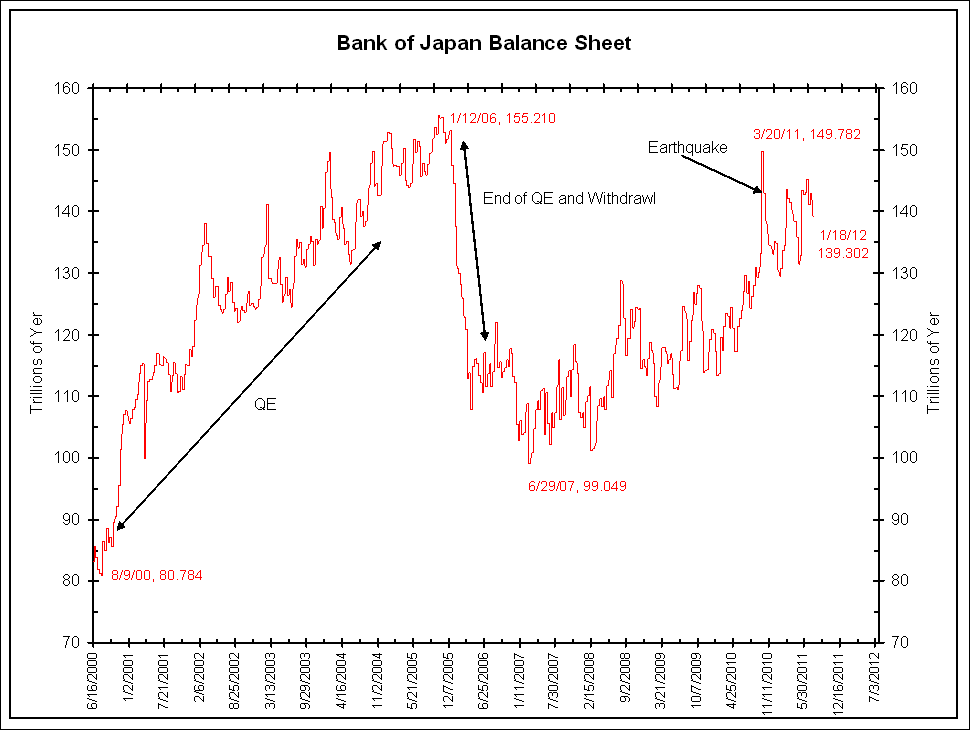
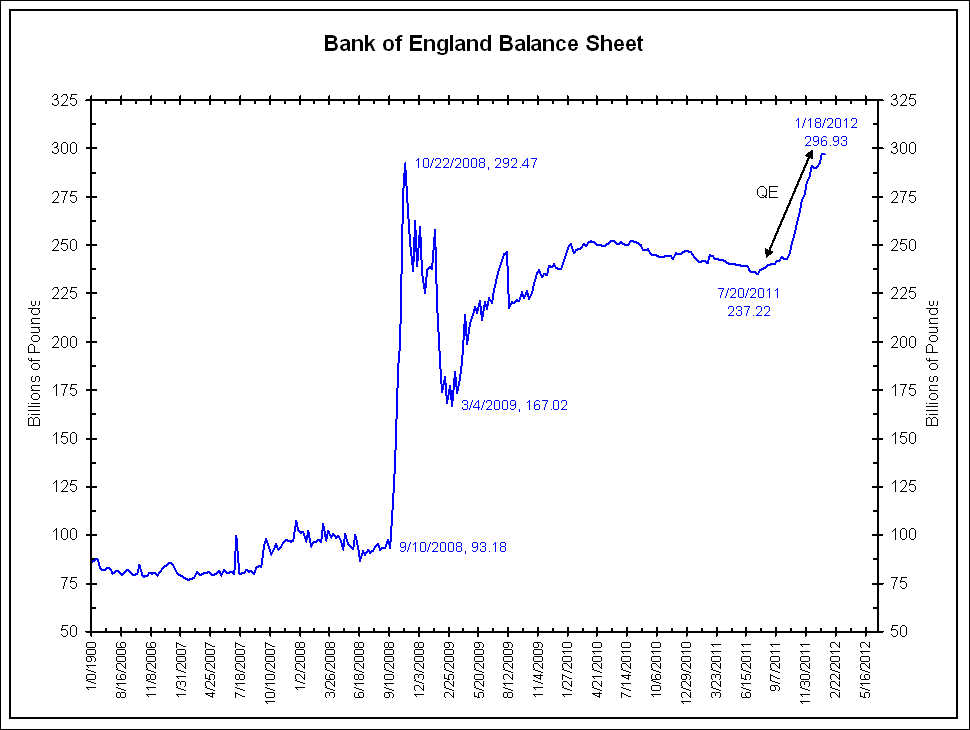
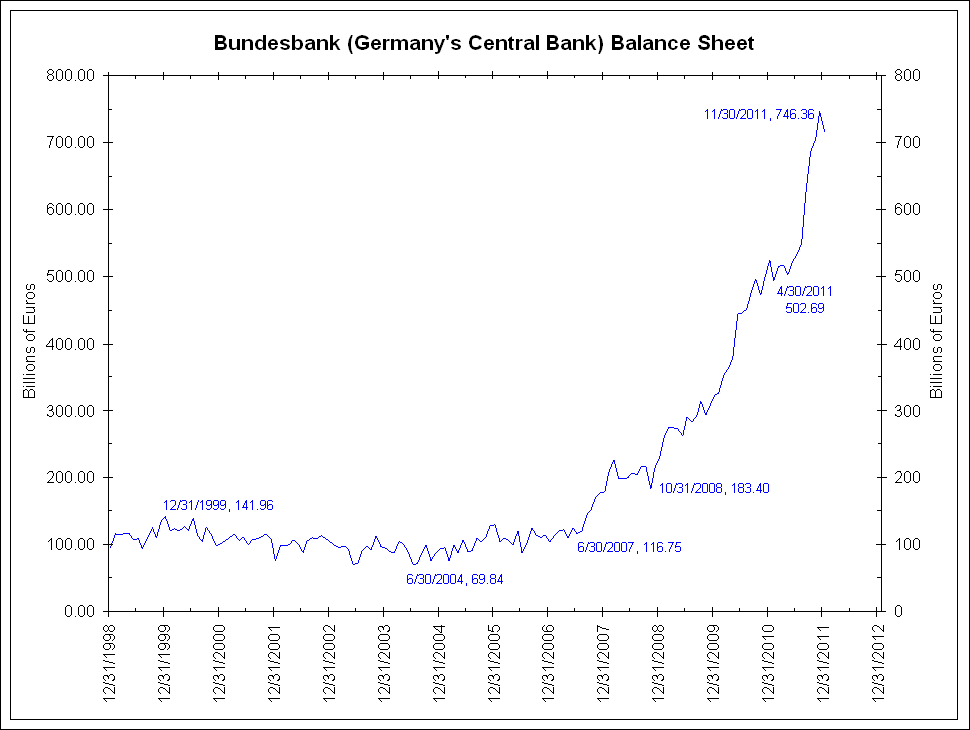
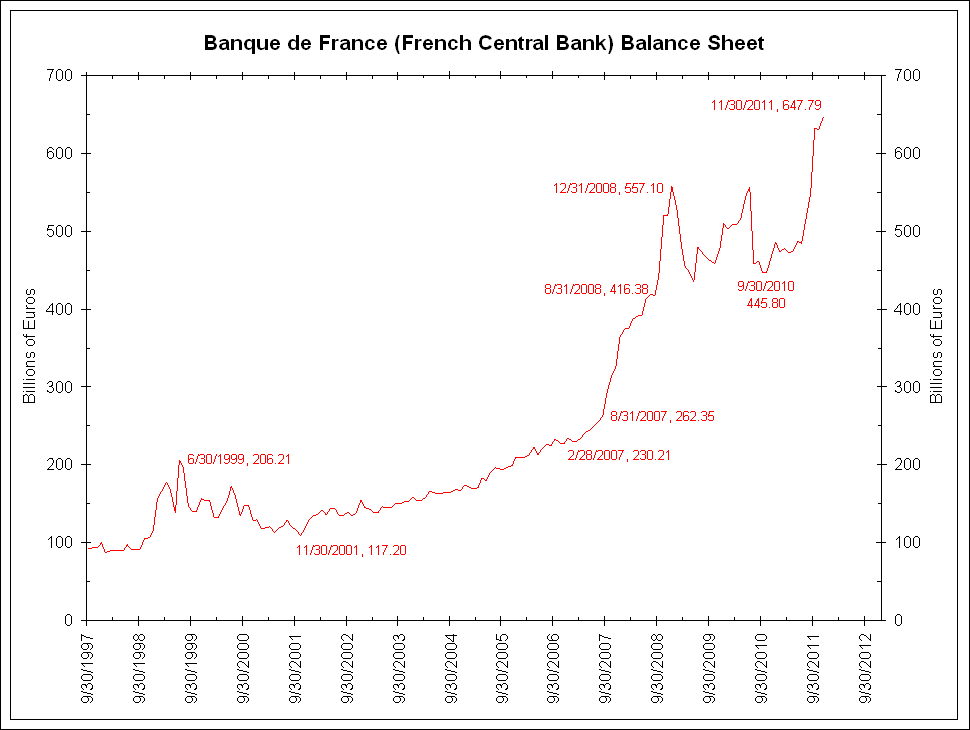
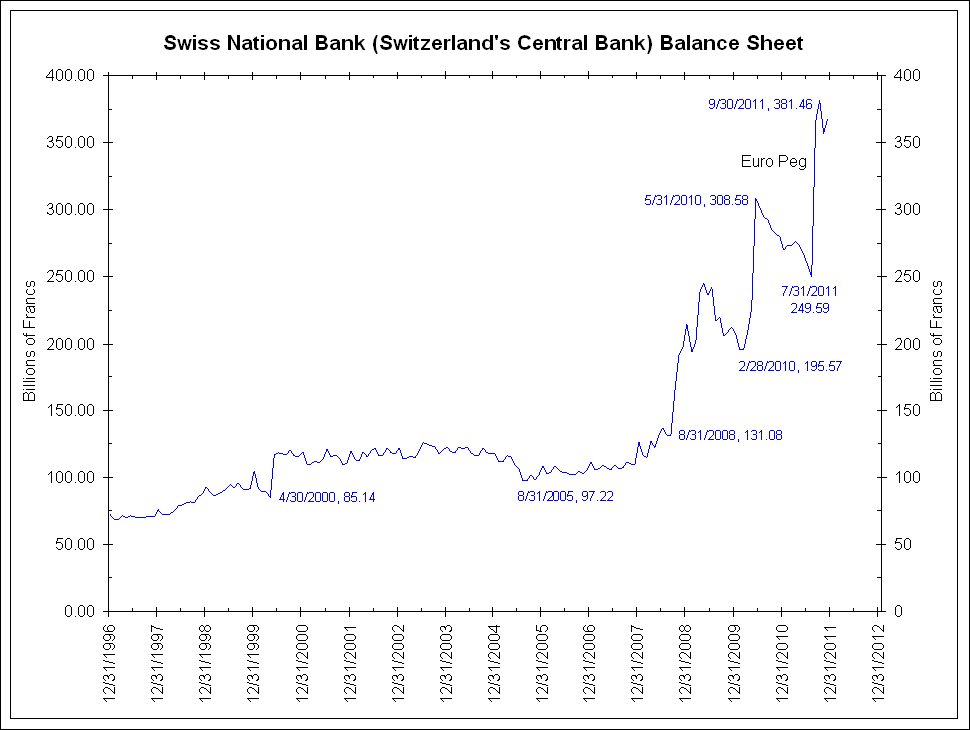
Comparing Central Bank Balance Sheets
For comparison’s sake, we converted the eight balance sheets above into dollar terms. The four largest, the PBoC, the Fed, the BoJ and the ECB are shown in the first chart below. The second four, the Bundesbank, Banque de France, the BoE and SNB are shown in the second chart below. We split them up because of their vastly different scales.
In the first chart, note that the balance sheets of the PBoC and the ECB are larger than the Federal Reserve when converted to dollars. The BoJ used to be the largest balance sheet in dollar terms until 2006.
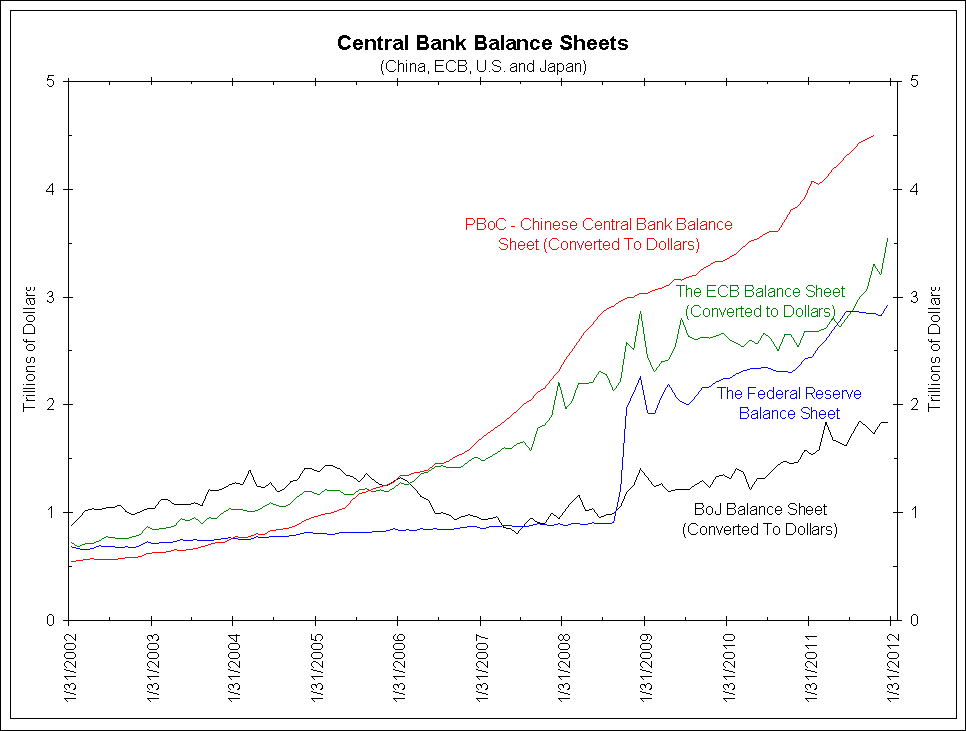
When shown in dollar terms below, the Bundesbank is the largest of the “second four” central banks. Further, its growth rate over the last five years has been among the highest. This is surprising since the Bundesbank is considered the “hard money” central bank.

Combining Central Bank Balance Sheets
The next chart below adds up the eight largest central bank balance sheets in dollar terms. It is only current through October as that is the latest number from the PBoC.
The combined size of these eight central banks’ balance sheets has almost tripled in the last six years from $5.42 trillion to more than $15 trillion and is still on the rise!

Central Banks Equal To One-Third Of World Equity Values
As noted above, QE is an expanding of balance sheets via increasing bank reserves. The purpose of QE, as explained by this Bank of England video, is to increase bank reserves through purchases of fixed income securities in order to lower interest rates. This makes fixed income securities relatively unattractive/overvalued and pushes investors out the risk curve. This should increase buying for riskier assets such as stocks, pushing them higher in price. Theoretically these higher prices should lead to a wealth effect and increased economic activity.
Given this definition and purpose, it is fair to compare the size of these balance sheets (now $15 trillion) to the capitalization of the world’s stock markets (now $48 trillion). This is shown in the chart below.
Prior to the 2008 financial crisis, the eight central bank balance sheets were less than 15% the size of world stock markets and falling. In the immediate aftermath of Lehman Brothers’ failure, these eight central bank balance sheets swelled to 37% the capitalization of the world stock market. But keep in mind that the late 2008/early 2009 peak was due to collapsing stock market values combined with balance sheet expansion via “lender of last resort” loans.
Recently, the eight central bank balance sheets have spiked back to 33% of world stock market capitalization. This has come about not by lender of last resort loans, but rather by QE expansion (buying bonds with “printed money“) even faster than world stock markets are rising.
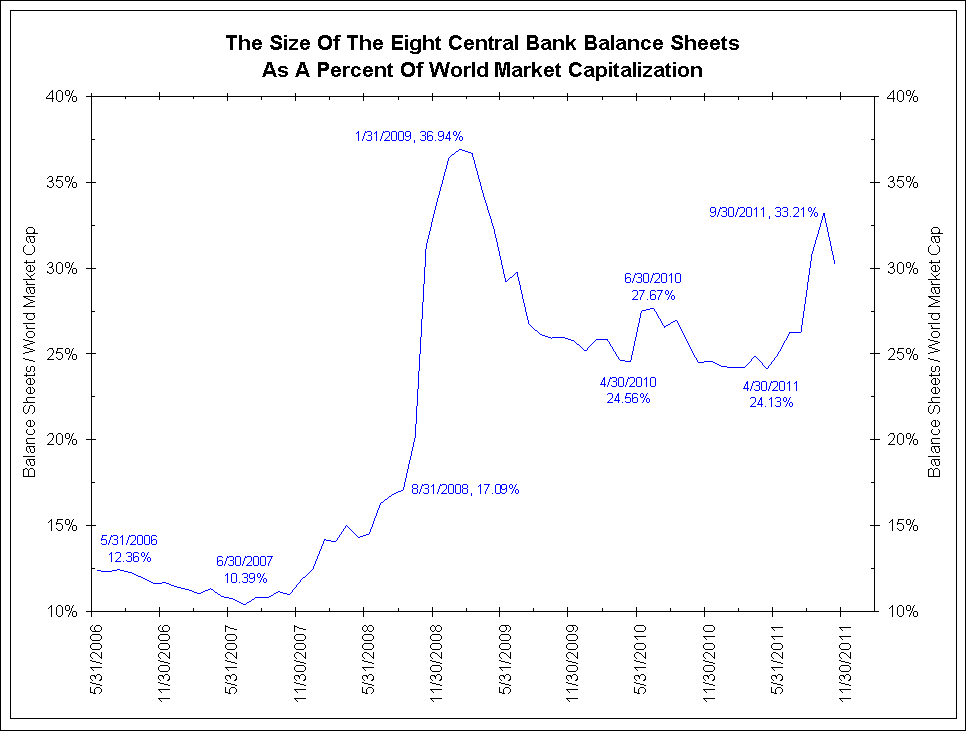
What Does It All Mean?
In our conference call earlier this month we said (page 12):
2011 was so difficult because all stocks seemingly moved together. It was as if every S&P 500 company had the same chairman of the board that knew only one strategy, resulting in a high degree of correlation between seemingly unrelated companies.
Massive central bank involvement in the markets risks returning us to a de facto centrally planned economy. Those S&P 500 companies all have the same chairman; it is Ben Bernanke because his policies are affecting everybody. That is what makes money management so difficult. Correlations will ebb and flow; they always do. But what makes them go away? This will only happen when governments and central banks go away.
But if they go away, then does that not mean things get ugly? Maybe they do get ugly, but it also means that we sort out the excesses in the market. We reward the people that do the right thing and we punish the people that do the wrong thing. And we have an adjustment process that may be ugly, but then we have a period of long expansion.
Central banks are ruling markets to a degree this generation has not seen. Collectively they are printing money to a degree never seen in human history.
So how does this process get reversed? How do central banks pull back trillions of dollars of money printing without throwing markets into a tailspin? Frankly, no one knows, least of all central banks as they continue to make new money printing records.
Until a worldwide exit strategy can be articulated and understood, risk markets will rise and fall based on the perceptions and realities of central bank balance sheets. As long as this is perceived to be a good thing, like perpetually rising home prices were perceived to be a good thing, risk markets will rise.
When/If these central banks go too far, as was eventually the case with home prices, expanding balance sheets will no longer be looked upon in a positive light. Instead they will be viewed in the same light as CDOs backed by sub-prime mortgages were when home prices were falling. The heads of these central banks will no longer be put on a pedestal but looked upon as eight Alan Greenspans that caused a financial crisis.
The tipping point between balance sheet expansion being bullish for risk assets versus bearish is impossible to know. Given the growth rate of central bank balance sheets around the world over the past few years, we might not have to wait too long to find out. Enjoy it while it is still bullish.
0 thoughts on “Living in a QE World”
Leave a Reply
You must be logged in to post a comment.
What’s the money vs Global GDP?
Jason,
I disagree… These are banking credits in a system where each dollar created is matched by a corresponding dollar of debt. As long as that link between debt and money is maintained then the cycle can reverse into a credit contraction where the net of all debtors are repaying more debt than they are choosing to borrow… But of course if the link between debt and money is broken then all bets are off and hyperinflation is here.
The last twelve years of the Dow/S&P says massive topping pattern to me… also confirmed by longer term breadth and bond market indicators…. Because of this I’ll see a bear/deflation until proven otherwise.
I totally agree about the coming Bear.
I am using my Trading Systems to build positions that will “make me rich” the next time a bubble bursts.
Also, using the shorter-term Charts to Profit on every Rally Higher.
Trend Trade for lots of Profits in these Volatile times.
Many people will argue that the central banks growing of their balance sheets doesn’t constitute inflation. After all the value of their balance sheet is growing but is the money being printed really make it out into the world?
My answer is that, yes, it does.
It does this via government spending.
The central banks are buying government paper, indirectly, via their big banks. The big banks are just borrowing at a very low interest rate, 0% in many cases, and investing the money at higher rates with sovereign debt / Treasury bonds. Arguably, the only newly printed money making it out is the money that has to do with the difference in those interest rates.
However, the money that the central banks print indirectly goes into government coffers which then spend it into the market. This is where the currency devaluation is coming from.
The real question isn’t when the central banks are going to reduce their balance sheets; the real question is when the governments are going to reduce theirs. The governments are driving the central banks to do their bidding, not the other way around.
As long as central Banks enable Elected Governments to continue to spend dollars greater than there GDP, There will come that day when the bubble breaks. Economics demands a payment date. The people who do not want to work, have convinced the politians that there is no day of recononing. The People lean on the politians the politions lean on the central banks. GDP’s go down.
Germany in the late 20,s The change the inflation numbers by changing how it is calulated. Yet food still has a price, Gasoline has a price. Everyone hopes the ballon will hold. The merry go round called denial. We know that 2 plus 2 equals 4 yet wed hope the laws of simple math will change. It is not that the bubble of cash chasing the bubble of political need, to clam the mob. We all know it will break. We do not know the when. Stay very nimble, when it goes POP. Where will you be. ????